Historical Places in Dubai

Dubai is known for its tall skyscrapers and modern lifestyle, but it also has a rich history. Long before it became a global city, Dubai was a small fishing and trading village. People lived in simple houses and traded goods like pearls and spices. Over time, Dubai grew into a famous city, but it has still preserved its history.
Many historical places in Dubai show its culture and traditions. Old forts, museums, and markets tell stories about the past. These places help visitors see how life was before Dubai became a modern city. One of the most special things about historical spots in Dubai is how they stand beside tall buildings, showing a mix of old and new.
Some of the must-visit places include the Al Fahidi Historical District, the Dubai Museum, and Al Seef. These places give a glimpse into the city’s past, with old houses, narrow streets, and beautiful Arabic designs. Visiting these sites is a great way to learn about Dubai’s history while enjoying its modern wonders.
Top 10 Historical Places in Dubai
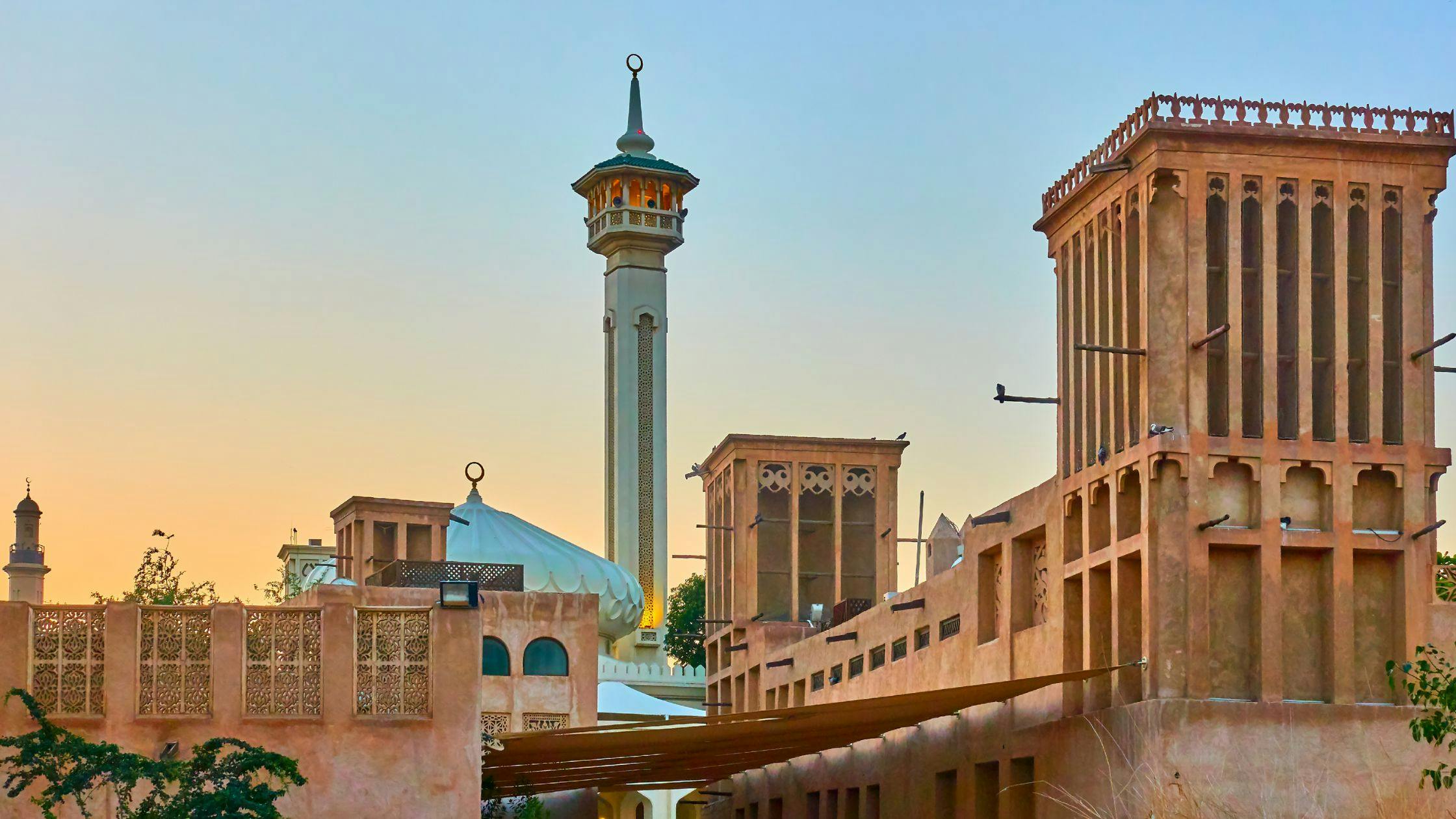
Al Fahidi Historical Neighborhood
Al Fahidi Historical Neighborhood, also called Al Bastakiya, is one of the oldest areas in Dubai. It is a well-preserved district that shows how Dubai looked before skyscrapers and modern buildings. The area has small alleys, sand-colored houses, and traditional wind towers that kept homes cool before air conditioners existed. It is one of the most famous historical places in Dubai, offering a glimpse into the city's rich past and cultural heritage.
Historical Significance: This neighborhood was built in the late 19th century by Persian merchants who traded in pearls and textiles. It was once an important place for business and culture. Today, it helps visitors see the simple and traditional life of old Dubai.
Key Attractions: The area is home to the Dubai Museum, art galleries, and cultural centers. Visitors can explore the Sheikh Mohammed Centre for Cultural Understanding, where they learn about Emirati traditions. There are also small cafés where people can relax and enjoy the peaceful atmosphere.
Best Time to Visit: The best time to visit is from November to March, when the weather is cooler. Mornings and late afternoons are the best times to explore without crowds.
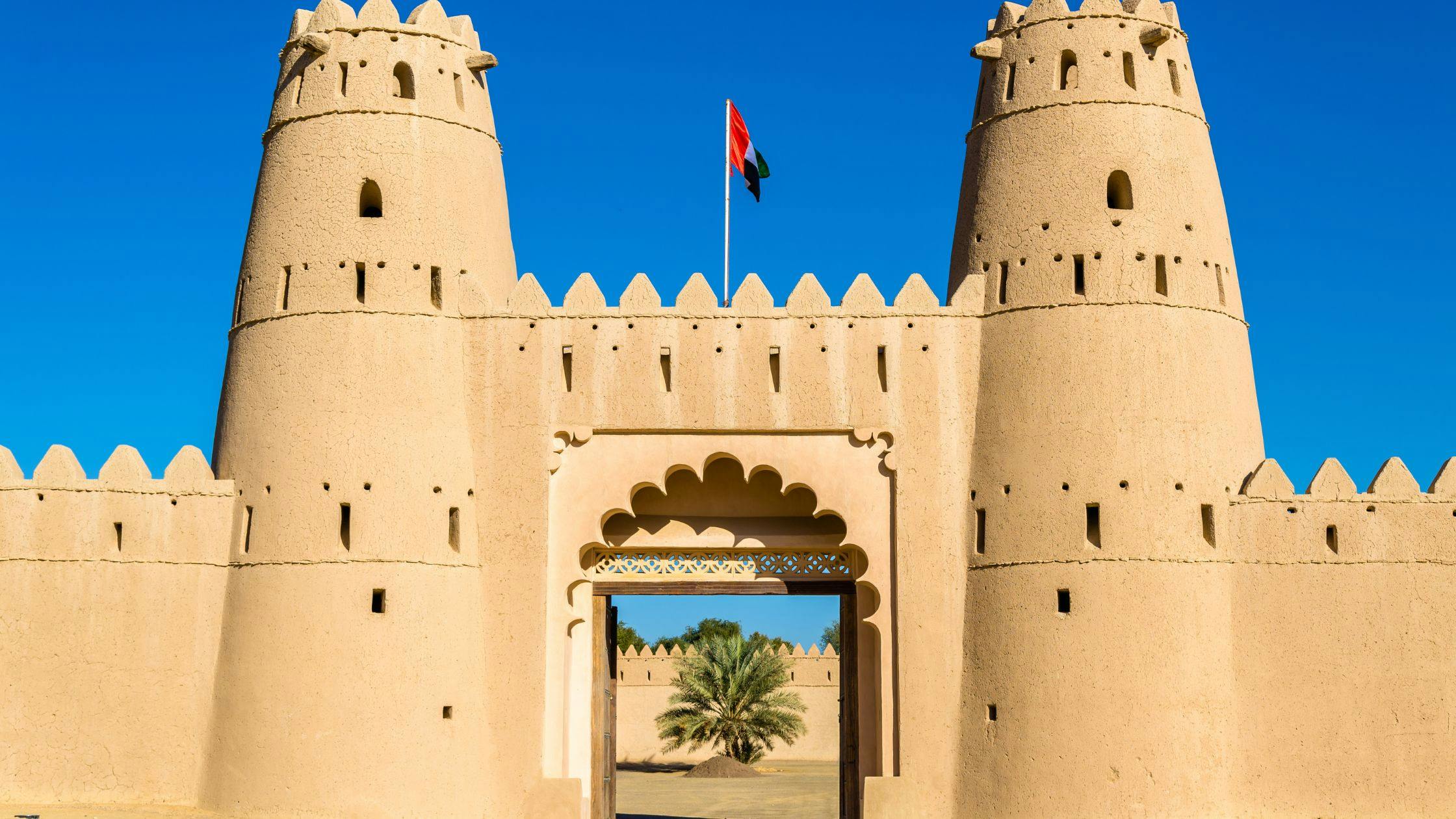
Dubai Museum & Al Fahidi Fort
Dubai Museum is inside Al Fahidi Fort, the oldest building in Dubai, which was built in 1787. This museum tells the story of Dubai’s past, from a small fishing and pearl-diving village to the modern city it is today. Visitors can see how people lived in the desert, traded goods, and built homes before skyscrapers existed.
Historical Significance: Al Fahidi Fort was first built to protect Dubai from invaders. Later, it became the ruler’s home and a government office. In 1971, it was turned into a museum to preserve Dubai’s history. The museum helps people understand how Dubai has changed over time.
Key Attractions: Inside, visitors can see old boats, weapons, and ancient maps. Life-size dioramas show traditional markets, homes, and desert life. Interactive exhibits help kids and adults learn in a fun way.
Best Time to Visit: The best time to visit is in the morning or late afternoon to avoid crowds. November to March is ideal due to cooler weather.
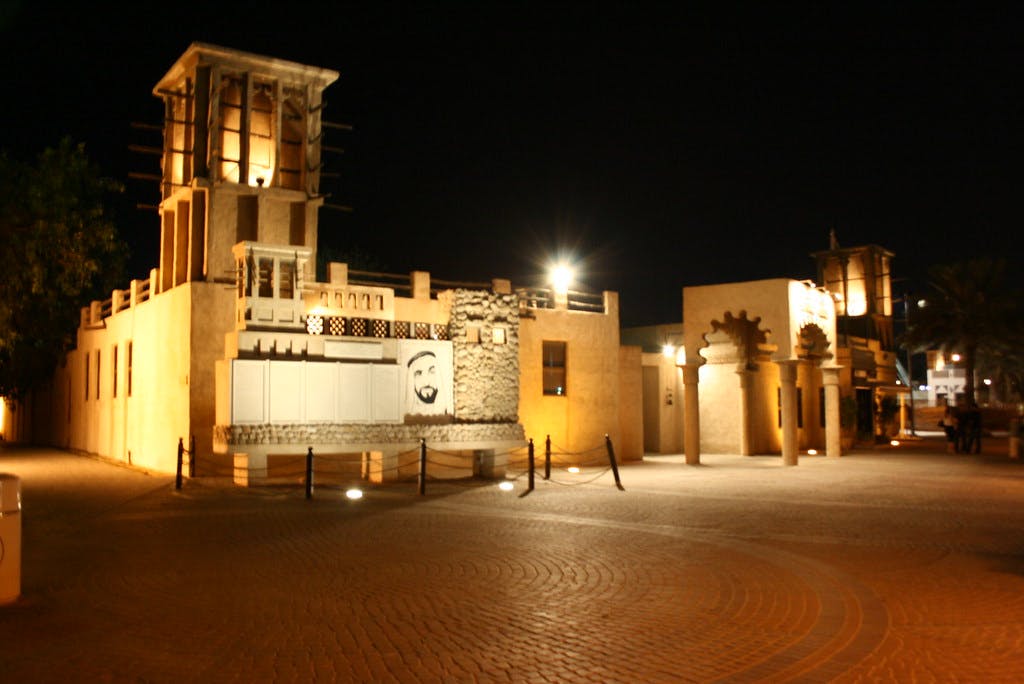
Sheikh Saeed Al Maktoum House
Sheikh Saeed Al Maktoum House is a historic home in Al Shindagha. It was once the residence of Sheikh Saeed Al Maktoum, who ruled Dubai from 1912 to 1958. The house is now a museum that gives visitors a look into Dubai’s royal life in the past.
Historical Significance: This house was built in 1896 and was the ruler’s family home. From here, important decisions about Dubai’s future were made. The building’s wind towers and courtyards show traditional Arabian architecture.
Key Attractions: Visitors can see rare photographs, coins, and stamps from Dubai’s early days. Old documents and maps show how Dubai grew over time. The balconies offer beautiful views of Dubai Creek.
Best Time to Visit: The best time to visit is in the morning or late afternoon. From November to March, the weather is cooler, making the visit more enjoyable.
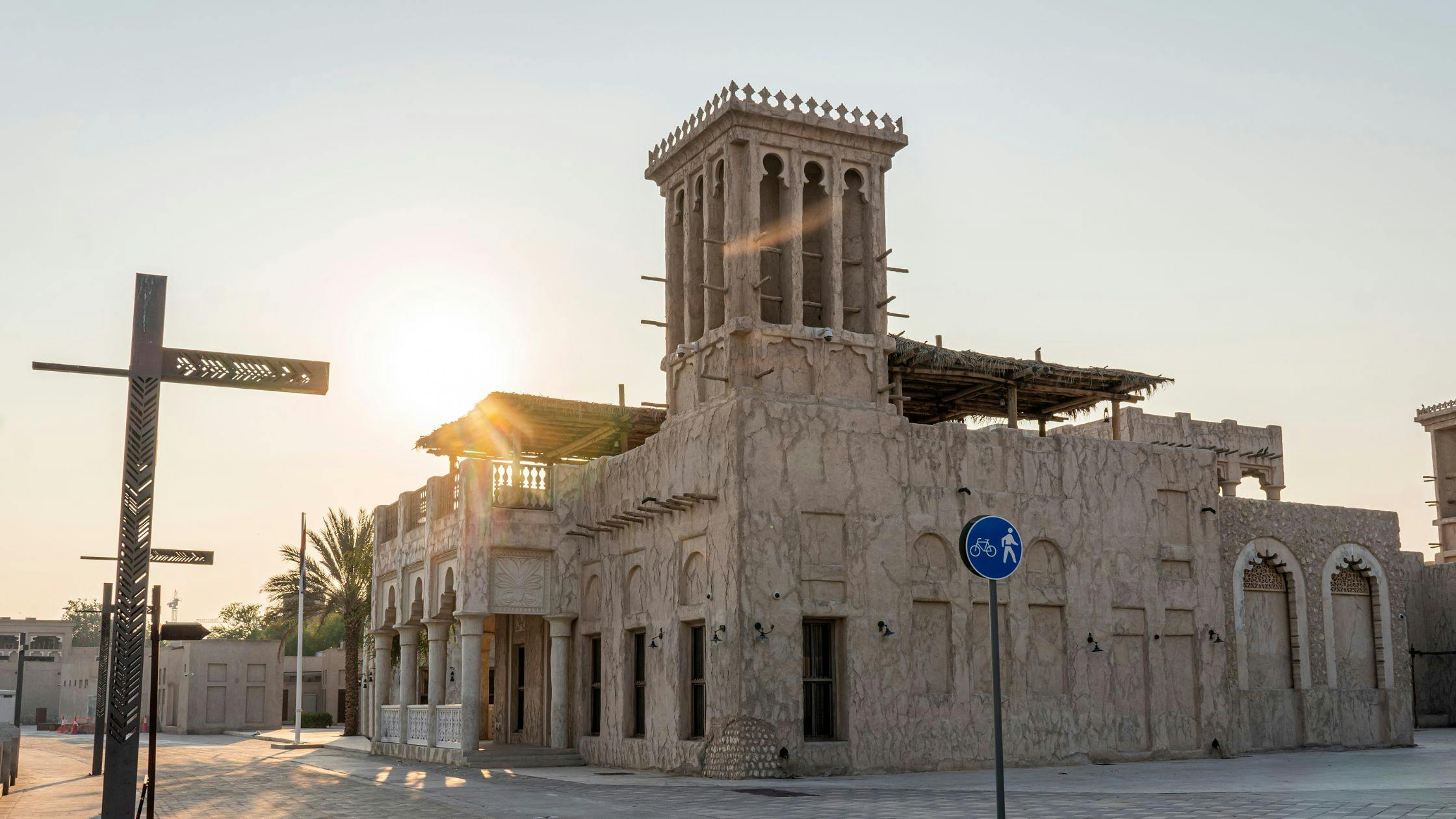
Al Shindagha Museum
Al Shindagha Museum is a cultural center that tells the story of Dubai’s past. It is located near Dubai Creek and has many restored traditional houses. The museum gives visitors an interactive experience to learn about Dubai’s rich heritage.
Historical Significance: This area was once the home of Dubai’s ruling family. The museum helps people understand how Dubai grew from a small fishing village into a modern city. It also shows the importance of trade and pearl diving in Dubai’s history.
Key Attractions: One of the best exhibits is "Dubai Creek: Birth of a City," which explains how the creek helped Dubai grow. Visitors can also explore maritime heritage displays, old artifacts, and traditional Emirati homes.
Best Time to Visit: The best time to visit is during the cooler months from November to March. Mornings and late afternoons are ideal for a comfortable visit.
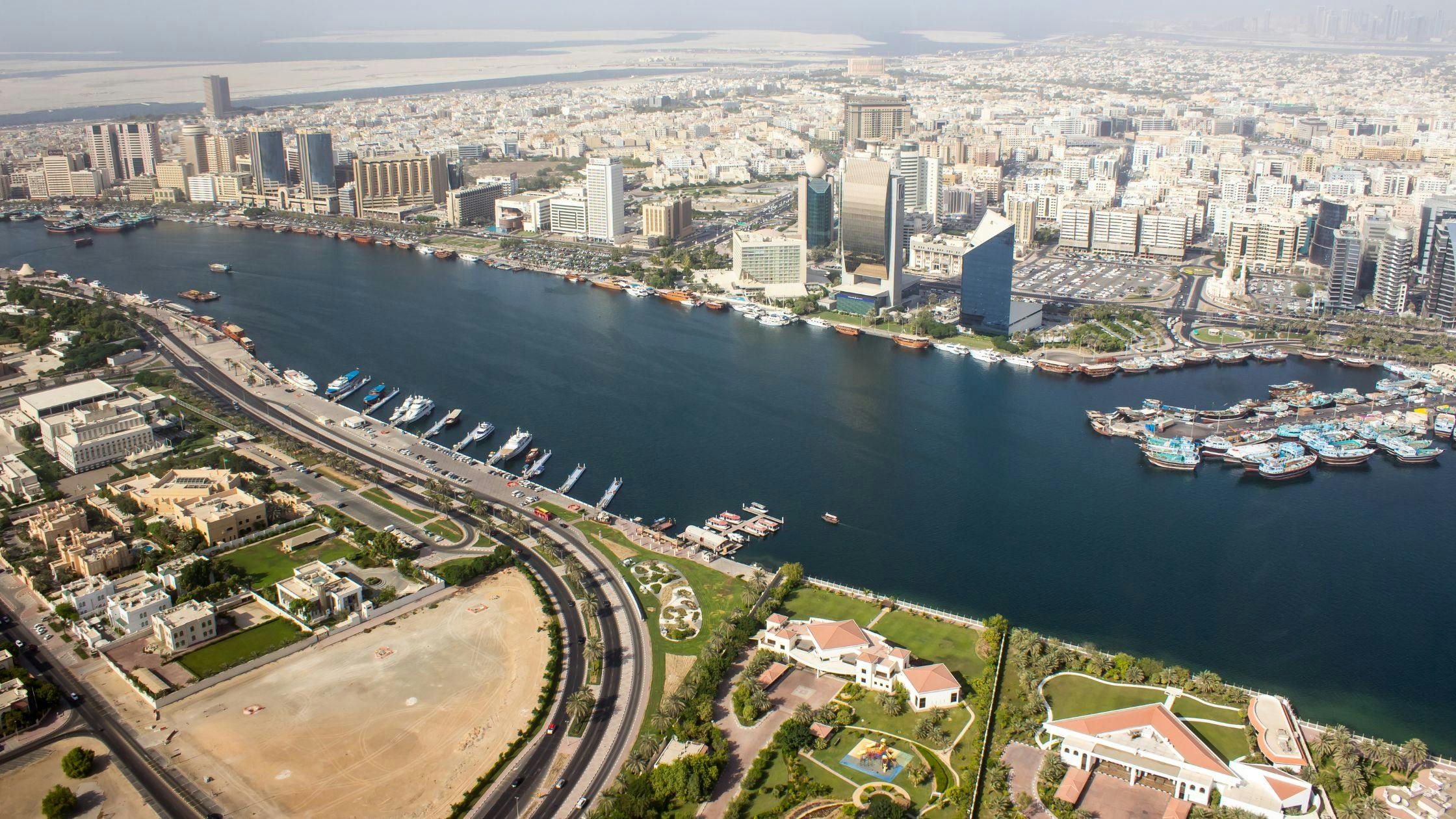
Dubai Creek
Dubai Creek is a natural waterway that runs through the heart of Old Dubai. It has been an important trade route for many years. The creek is still busy with traditional wooden boats called abras that carry people across the water. It is one of the most famous historical places in Dubai, where visitors can experience the city's old trading culture and enjoy a scenic boat ride.
Historical Significance: Dubai Creek played a big role in Dubai’s early trade and commerce. It helped the city grow as a fishing, pearl diving, and trading hub. Because of its importance, it has been nominated as a UNESCO World Heritage Site.
Key Attractions: Visitors can take a ride on an abra (water taxi) to enjoy beautiful views of Old Dubai. The creek is also home to gold, spice, and textile souks, where people can shop for local treasures.
Best Time to Visit: The best time to visit is in the evening, when the weather is cooler and the city lights reflect beautifully on the water.
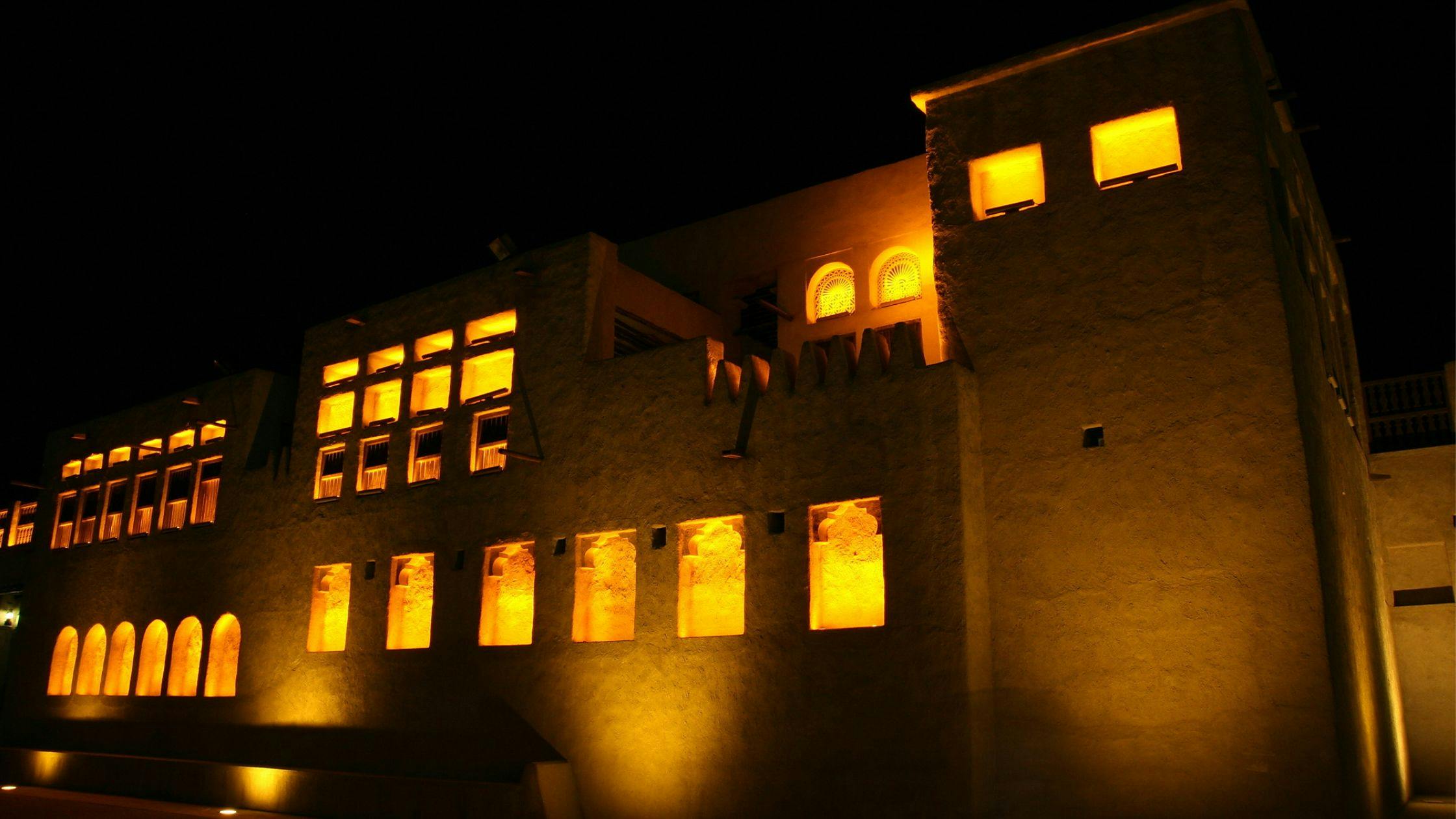
Heritage Village in Dubai
Heritage Village is a special place in Dubai that shows how people lived in the past. It is like a small village where visitors can see old houses, markets, and traditional crafts.
Historical Significance: This village was built to preserve Dubai’s rich history and culture. It helps people understand Bedouin life, pearl diving, and Emirati traditions. Visitors can learn how people survived in the desert before Dubai became modern.
Key Attractions: At Heritage Village, you can see craftsmen making pottery, weaving baskets, and creating traditional clothes. There are also camel rides and falconry shows, where you can see how these animals are important in Emirati life.
Best Time to Visit: The best time to visit is in the cooler months (November to March). Evenings are also great because there are live performances and cultural events. This makes it a perfect time to explore historical places in Dubai while enjoying the pleasant weather and vibrant atmosphere.
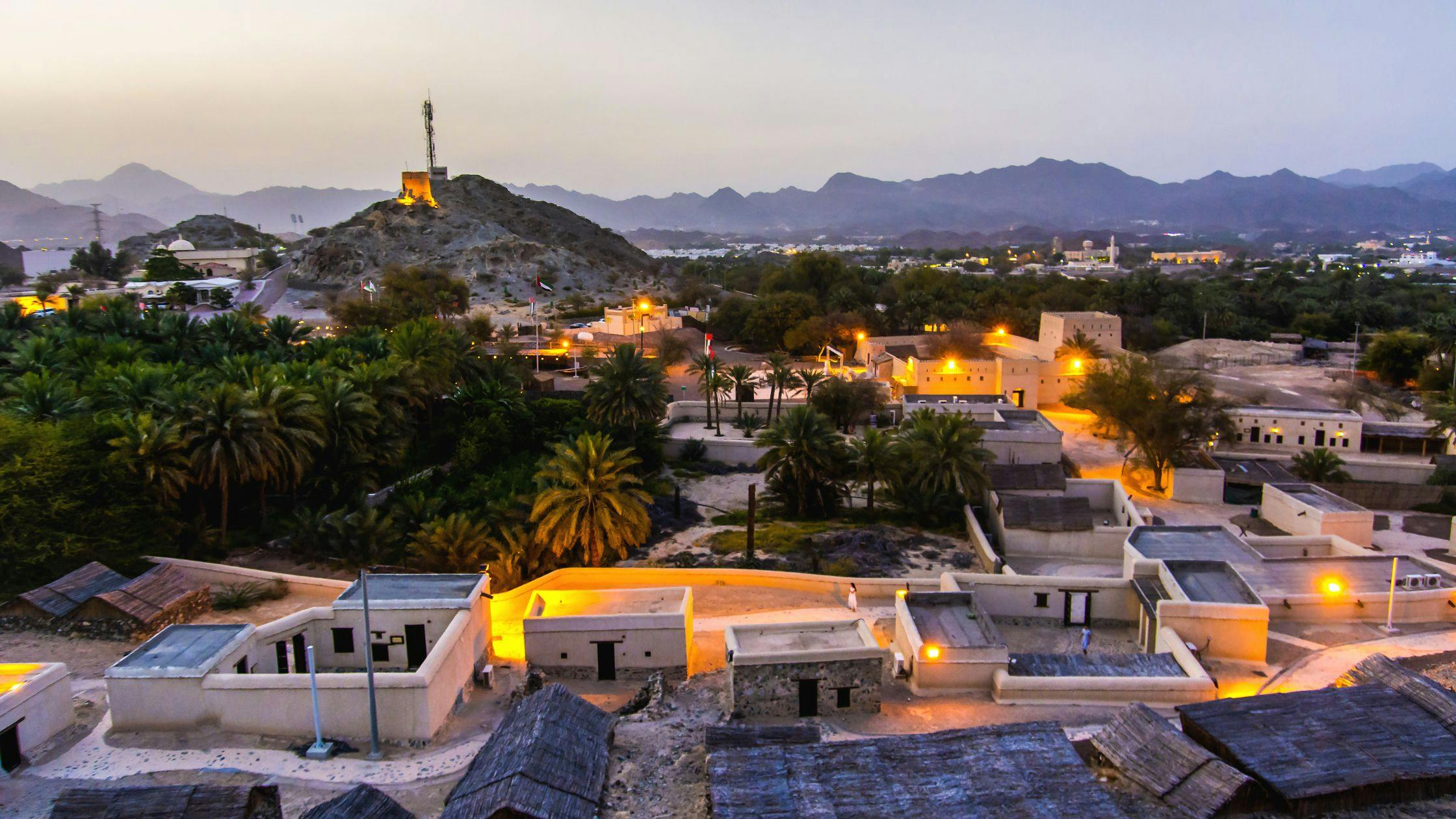
Hatta Heritage Village in Dubai
Hatta Heritage Village is a beautiful old village in the Hatta mountains. It is a 16th-century settlement that has been restored to show how people lived in rural Dubai long ago. The village has stone houses, watchtowers, and a fort.
Historical Significance: This village shows the traditional way of life before Dubai became a modern city. It gives visitors a chance to see how Emirati families live in the mountains. The village also has old tools, weapons, and pottery that tell stories of the past.
Key Attractions: You can explore ancient houses, tall watchtowers, and a traditional fort. The village is also surrounded by the beautiful Hatta mountains and wadis, making it a perfect place for nature lovers.
Best Time to Visit: The best time to visit is from October to March, when the weather is cool. The village looks especially beautiful in winter and early spring.
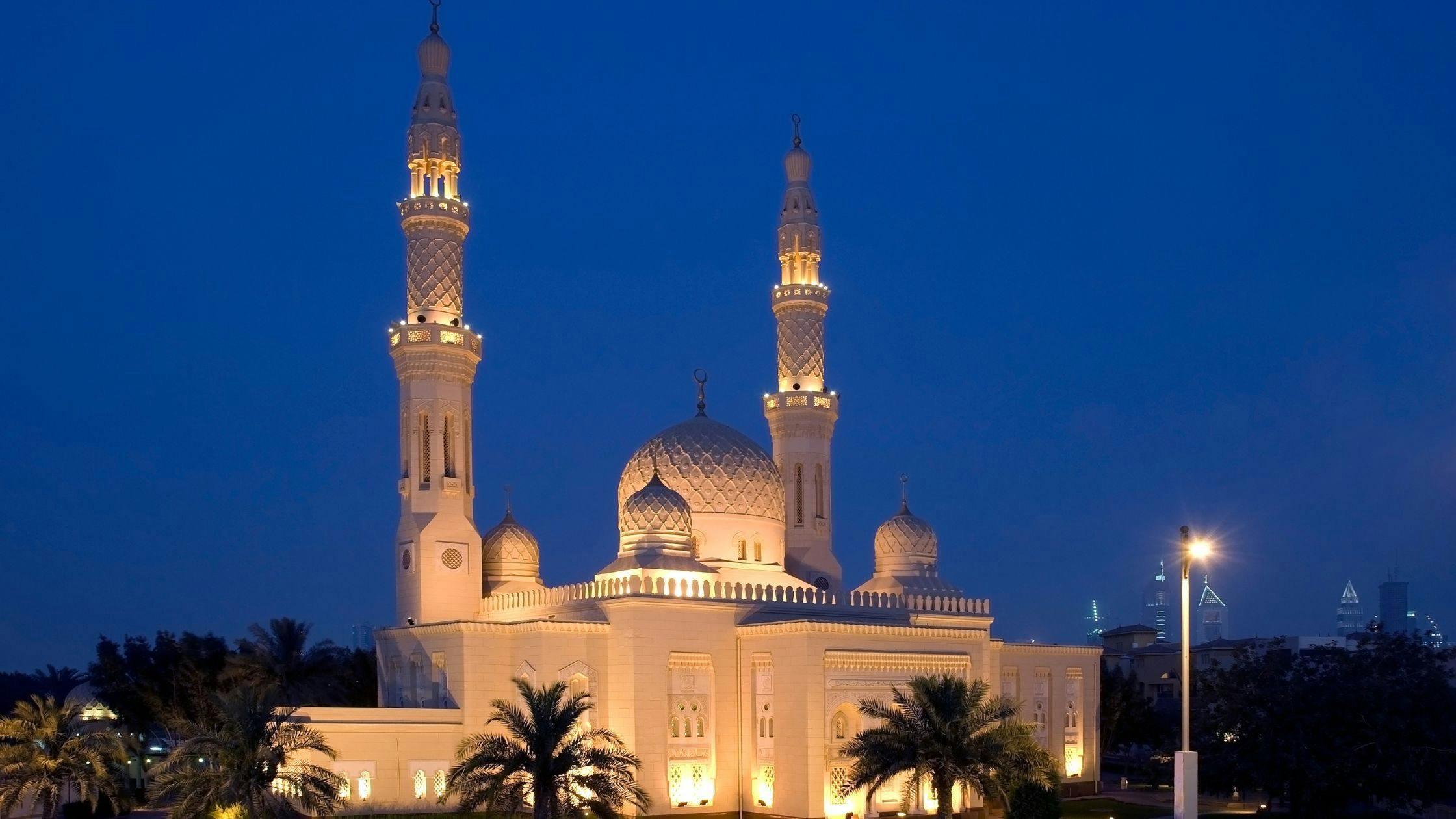
Jumeirah Mosque in Dubai
The Jumeirah Mosque is one of the most beautiful mosques in Dubai. It is made of white stone and looks stunning, especially at sunset. The mosque is open to non-Muslim visitors, making it a great place to learn about Islamic culture.
Historical Significance: This mosque was built in the 1970s but follows traditional Fatimid architecture, which is over 1,000 years old. It is an important symbol of Dubai’s cultural openness, allowing people from all backgrounds to visit and learn about Islam.
Key Attractions: Visitors can join guided tours to learn about Islamic traditions. The mosque's beautiful domes and tall minarets make it a great spot for photography.
Best Time to Visit: The best time to visit is in the morning when guided tours are available. The mosque looks magical at sunset, making it perfect for an evening visit.

Coins Museum in Dubai
The Coin Museum is a hidden gem in the Al Fahidi District. It has over 470 rare coins from different periods of history. This small but interesting museum helps visitors learn about old money and trade in Dubai.
Historical Significance: The museum shows the history of currency in the UAE and nearby regions. It explains how coins were made and how trade helped Dubai grow. Some coins are hundreds of years old, looking into the past. It is a fascinating place for those interested in historical places in Dubai and learning about the city’s rich heritage.
Key Attractions: Visitors can see gold, silver, and copper coins used at different times. There are interactive displays that explain the importance of these coins.
Best Time to Visit: The best time to visit is in the morning or early afternoon to avoid crowds. The museum is air-conditioned, making it a good place to visit on hot days.
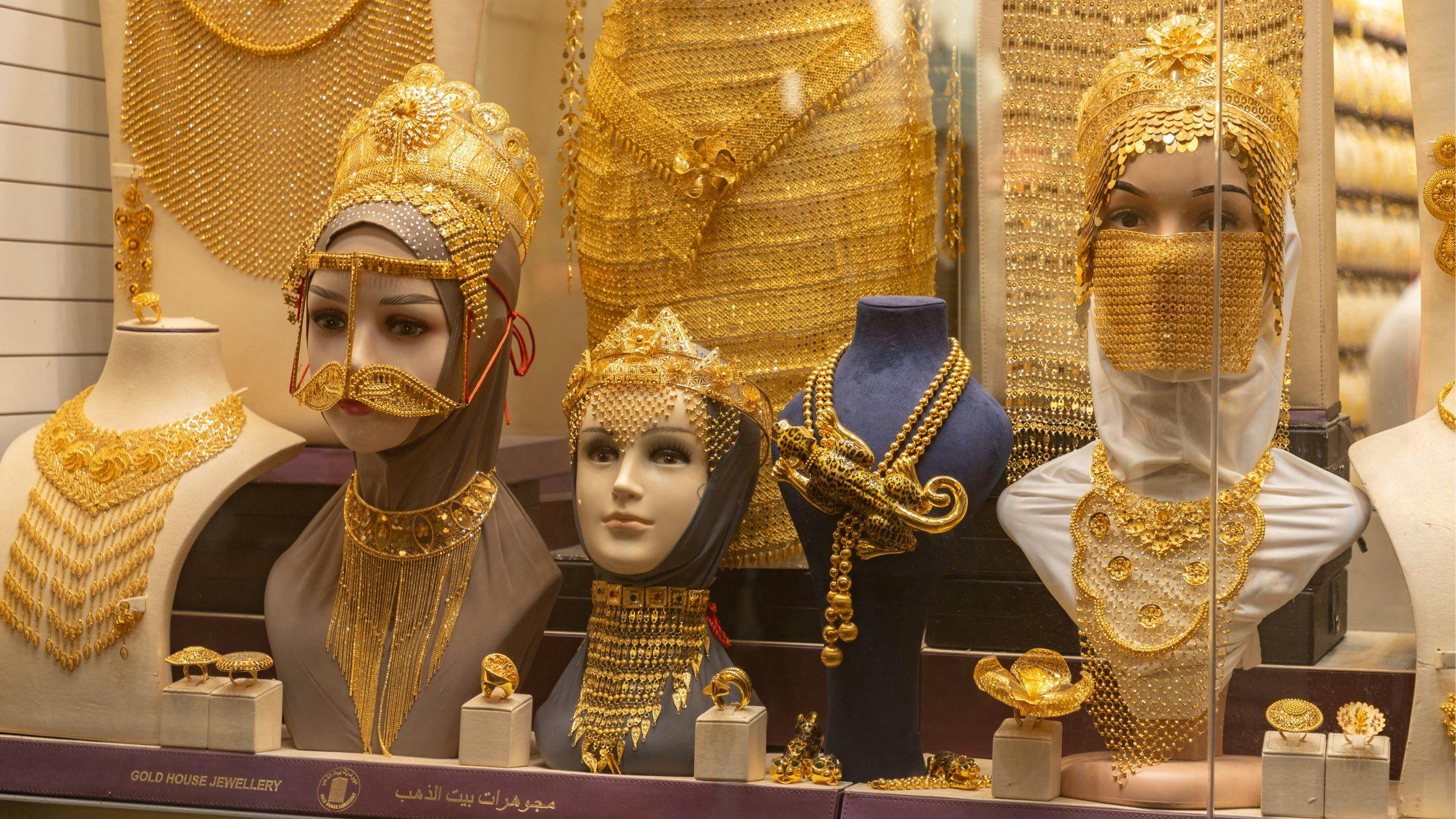
Dubai Gold Souk
Dubai Gold Souk is a famous traditional market in Old Dubai. It is one of the largest gold markets in the world. The market has hundreds of shops selling gold, silver, and gemstones. It is also one of the historical spots in Dubai, where visitors can experience the city's rich trading history and traditional marketplace culture.
Historical Significance: Dubai has been a gold trading center for many years. Traders from all over the world come here to buy and sell gold. The souk shows Dubai’s rich history in trade and its connection to the jewelry business.
Key Attractions: The souk has beautiful gold jewelry, including rings, necklaces, and bracelets. Visitors can also see the world’s largest gold ring, displayed in one of the shops.
Best Time to Visit: It is best to visit in the morning or evening when the weather is cooler. The souk is busiest in the late afternoon, creating a lively shopping experience.
